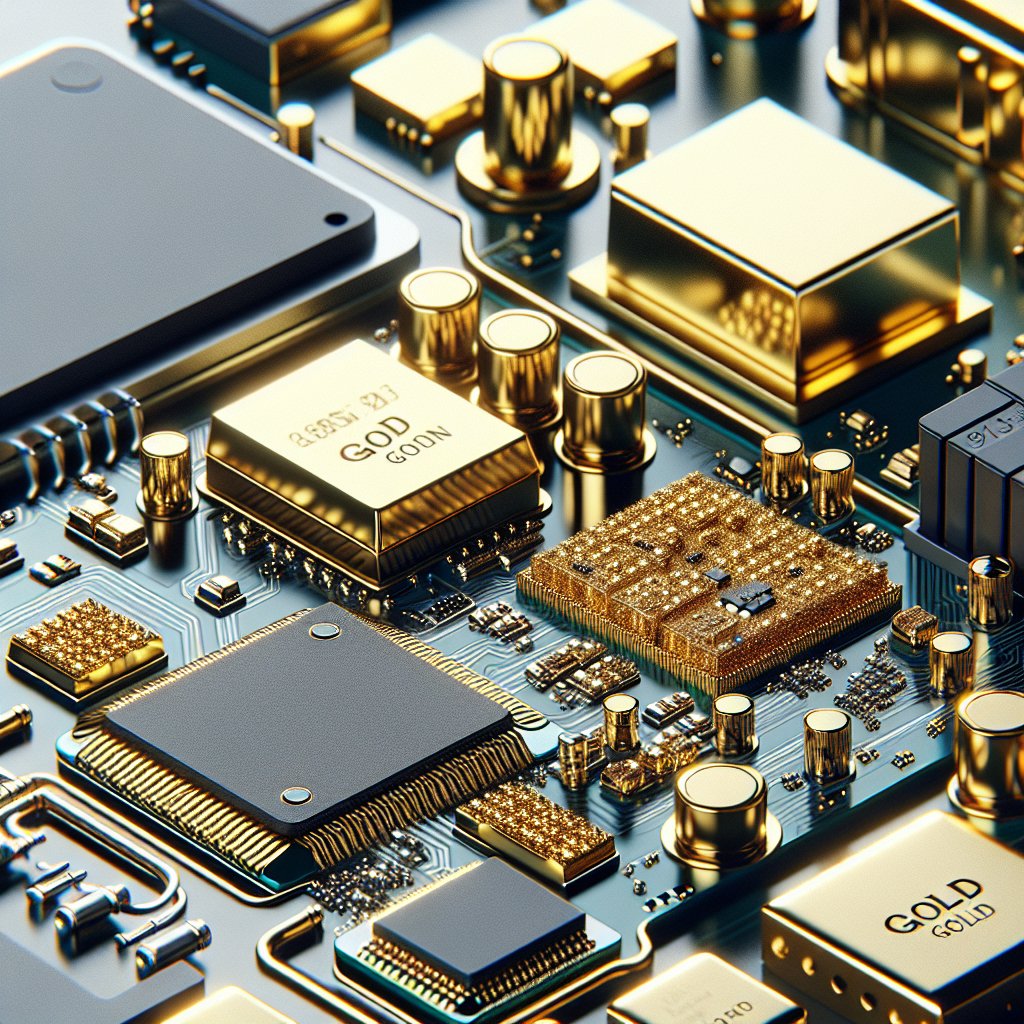Gold, a precious metal known for its luster and rarity, plays a crucial role in the electronics and high-tech industries. Its unique properties make it an indispensable component in a wide range of devices, from smartphones to advanced medical equipment. This article explores the various applications of gold in electronics and high-tech devices, highlighting its significance and the reasons behind its widespread use.
The Unique Properties of Gold
Gold’s exceptional properties make it an ideal material for use in electronics and high-tech devices. One of its most notable characteristics is its excellent conductivity. Gold is an outstanding conductor of electricity, which is essential for the efficient functioning of electronic circuits. Unlike other metals, gold does not corrode or tarnish over time, ensuring long-lasting and reliable performance in electronic components.
Another important property of gold is its malleability. Gold can be easily shaped into thin wires or sheets, making it versatile for various applications. This malleability allows manufacturers to use gold in intricate and delicate components, such as connectors and bonding wires, without compromising their structural integrity.
Gold’s resistance to oxidation and corrosion is another reason for its widespread use in electronics. In environments where other metals might degrade, gold remains stable, ensuring the longevity and durability of electronic devices. This resistance to environmental factors is particularly important in high-tech applications where reliability is paramount.
Applications of Gold in Electronics
Gold is used in a multitude of electronic components, each benefiting from its unique properties. One of the most common applications is in connectors and switches. Gold-plated connectors are widely used in electronic devices to ensure a reliable and efficient connection. The use of gold in these components minimizes the risk of signal loss and enhances the overall performance of the device.
In addition to connectors, gold is also used in the production of printed circuit boards (PCBs). Gold plating is applied to the surface of PCBs to improve conductivity and prevent oxidation. This ensures that the electronic signals can travel efficiently across the board, reducing the risk of malfunctions and improving the device’s performance.
Gold is also a critical component in semiconductor devices. It is used in the form of bonding wires to connect the semiconductor chip to the external leads of the package. The use of gold bonding wires ensures a strong and reliable connection, which is essential for the proper functioning of the semiconductor device.
Gold in High-Tech Devices
Beyond traditional electronics, gold plays a vital role in high-tech devices and cutting-edge technologies. In the medical field, gold is used in various diagnostic and therapeutic devices. For example, gold nanoparticles are employed in certain types of cancer treatments, where they help to target and destroy cancer cells without harming surrounding healthy tissue.
Gold is also used in advanced imaging technologies, such as electron microscopy. Its high atomic number makes it an excellent material for enhancing contrast in imaging, allowing for more detailed and accurate observations at the microscopic level.
In the aerospace industry, gold is used in the production of satellites and spacecraft. Its resistance to radiation and extreme temperatures makes it an ideal material for use in the harsh conditions of space. Gold is used in the form of thin films to protect sensitive components from radiation and to reflect heat, ensuring the proper functioning of the spacecraft.
The Economic Impact of Gold in Electronics
The use of gold in electronics and high-tech devices has significant economic implications. The demand for gold in these industries contributes to the overall demand for the metal, influencing its market price. As technology continues to advance and the demand for high-tech devices grows, the demand for gold is expected to increase, impacting its value in the global market.
Moreover, the recycling of electronic waste, or e-waste, has become an important aspect of the gold supply chain. Recovering gold from discarded electronic devices not only helps to meet the demand for the metal but also reduces the environmental impact of mining. This has led to the development of more efficient recycling technologies and processes, further integrating gold into the circular economy.
Challenges and Future Prospects
Despite its many advantages, the use of gold in electronics and high-tech devices is not without challenges. The high cost of gold can be a limiting factor, prompting researchers and manufacturers to explore alternative materials and methods to reduce costs. However, the unique properties of gold make it difficult to replace entirely, ensuring its continued relevance in the industry.
Looking to the future, the role of gold in electronics and high-tech devices is likely to expand. As new technologies emerge and existing technologies evolve, the demand for gold is expected to grow. Innovations in nanotechnology, for example, may lead to new applications for gold, further cementing its importance in the high-tech landscape.
In conclusion, gold’s unique properties make it an invaluable material in the electronics and high-tech industries. Its excellent conductivity, resistance to corrosion, and versatility ensure its continued use in a wide range of applications. As technology advances and the demand for high-tech devices increases, gold will remain a critical component, driving innovation and economic growth in the industry.












